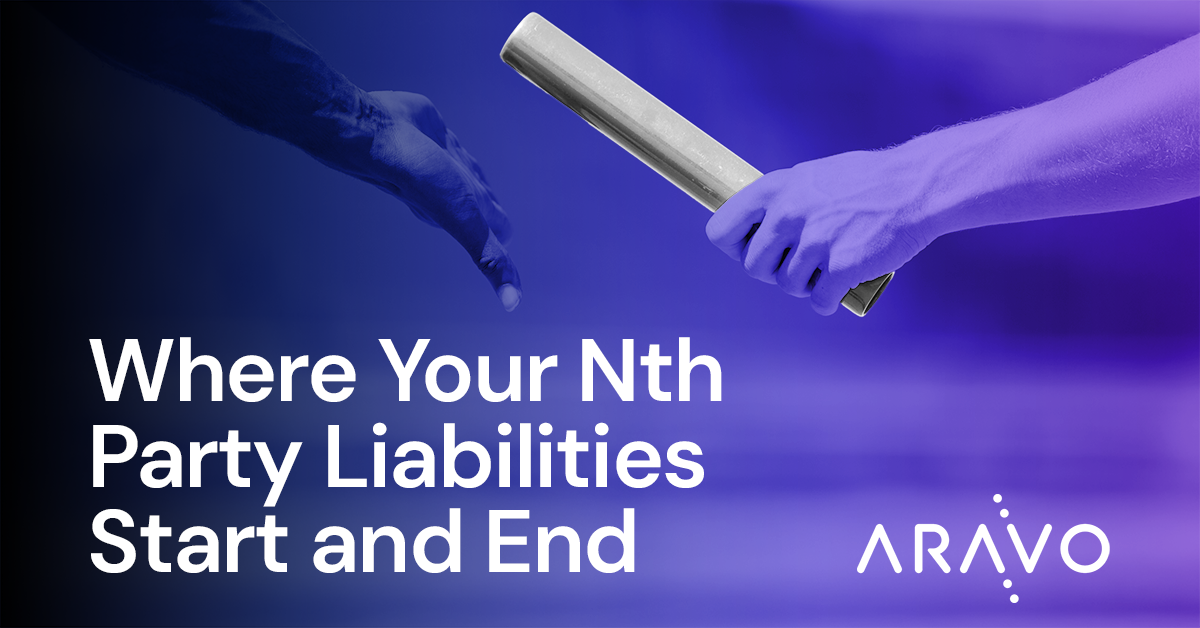
The world of Governance, Risk, and Compliance (GRC) is evolving, but nowhere is the pace of change more intense than in Third-Party Risk Management (TPRM). At Aravo, we see firsthand how organizations are grappling with a rapidly expanding risk landscape – one that now encompasses not just traditional concerns like fraud, bribery, and regulatory misalignment, but also new frontiers such as AI, concentration risk, and supply chain sustainability.
It goes without saying that today’s TPRM professionals must manage a more complex web of risks than ever before. That includes (but is certainly not limited to):
The sheer scale of third-party relationships is staggering. Gartner noted back in 2020 that 60% of businesses engage with 1,000+ third parties – numbers that have only grown over the past five years. When you factor in fourth parties (your suppliers’ suppliers) and beyond, the risk ecosystem multiplies exponentially; easily reaching into the millions of indirect supplier relationships. Where there are no contractual agreements between the engaging organization and the fourth party, insight and leverage into those parties can be particularly challenging.
At the same time, there is no clear demarcation for where culpability for fourth-party and Nth party noncompliance, corruption, or other ethical violations ends. The market and regulators are less receptive to protestations of no contracts and therefore no obligations and no culpability than ever before. Therefore, organizations must expand their oversight and influence beyond direct connections and contracts.
The regulatory environment is also more active than ever, with new rules emerging and changing on a near-weekly basis. Laws like the EU’s Corporate Sustainability Reporting Directive (CSRD) and the Uyghur Forced Labor Prevention Act (UFLPA) are raising the bar for due diligence and transparency even while other laws (FCPA, LkSG) are scaled back. But when considering Nth party risks and obligations, it’s not all about compliance – reputational risk is a primary risk and oversight driver. Customers, employees, partners, investors, and boards expect companies to proactively manage their entire third-party risk ecosystem and demonstrate ethical supply chain best practices.
Modern TPRM is not a defensive play; it’s a strategic investment. Leading organizations are reading the tea leaves – and in some cases, the latest legislation (like DORA) – that suggest simplifying third-party networks to reduce direct and indirect risks. Conceptually, if an organization reduces its direct engagements, it will reduce its Nth party network and associated risks as well. It also likely means that commitments, financial obligations, and interdependencies will increase across those remaining engagements, which alters the risk calculus across the TPRM program.
Further, the business should clearly identify critical third-party engagements and invest in the relationships to allow for additional insight and oversight into its fourth and Nth parties. Whether a business has leverage over or can optimize a fourth-party engagement is secondary to having visibility into and awareness around its relative risks. Technology and automation can help businesses better identify critical risks, third parties, and best pathways to access and optimize Nth party relationships.
The TPRM landscape will only become more complex as global supply chains grow, and regulatory expectations rise. But with the right systems, strategic focus, and a culture of transparency, organizations can not only protect themselves from risk but also create a resilient, competitive advantage.
At Aravo, we’re committed to helping you navigate this dynamic environment; empowering you to connect, control, and excel in third-party risk management.
Partnering with Aravo today can set organizations up for success tomorrow – and beyond! Contact us to see our Intelligence First PlatformTM in action and learn how we can help your team adopt a holistic, strategic TRPM program.
Share with Your Friends: